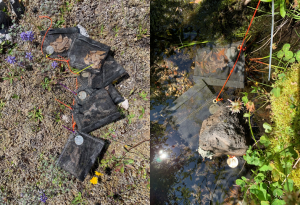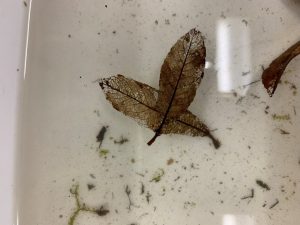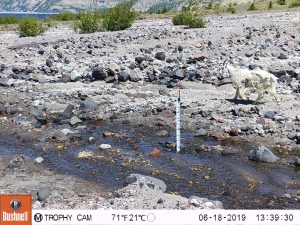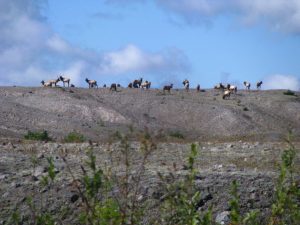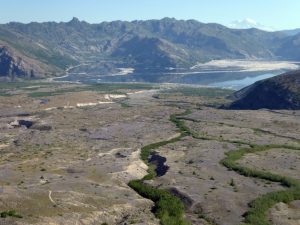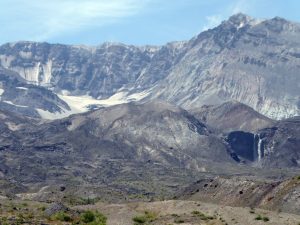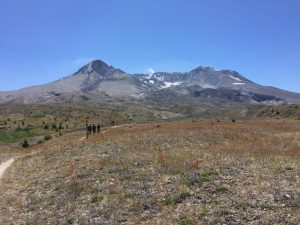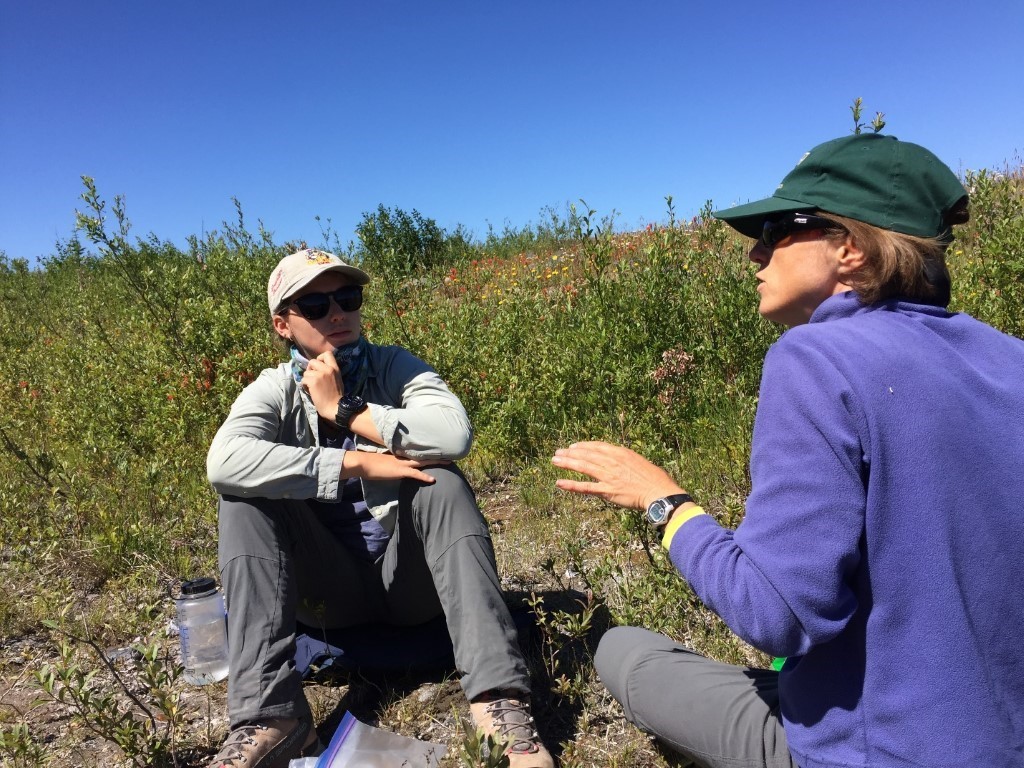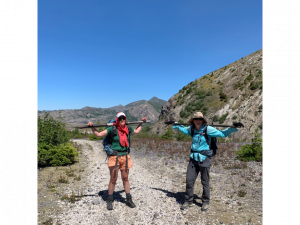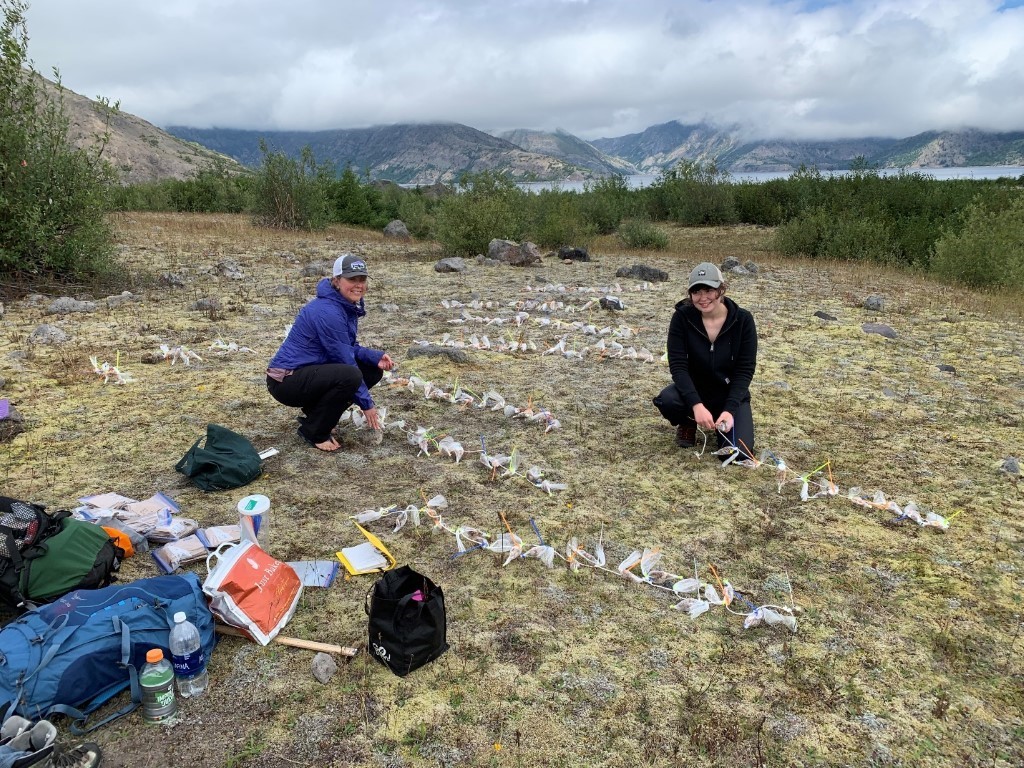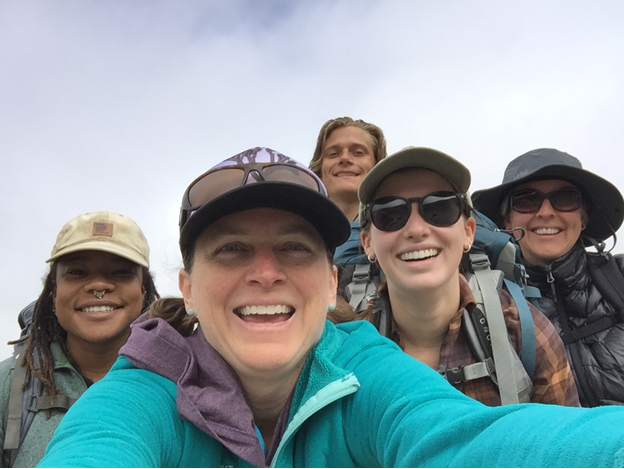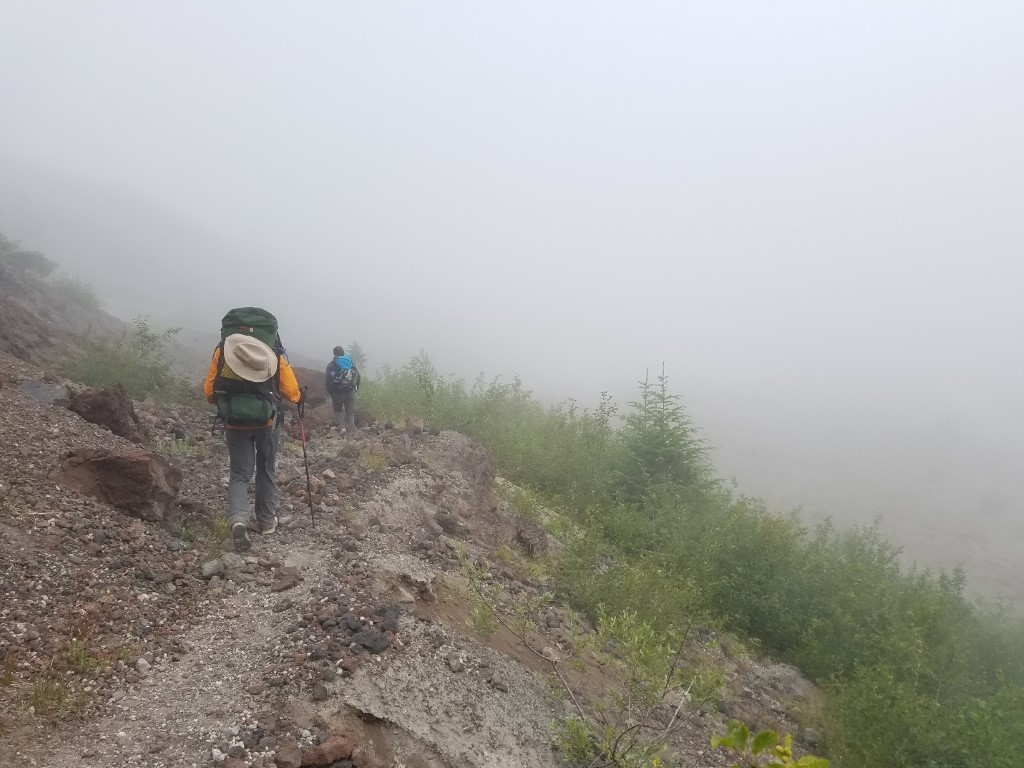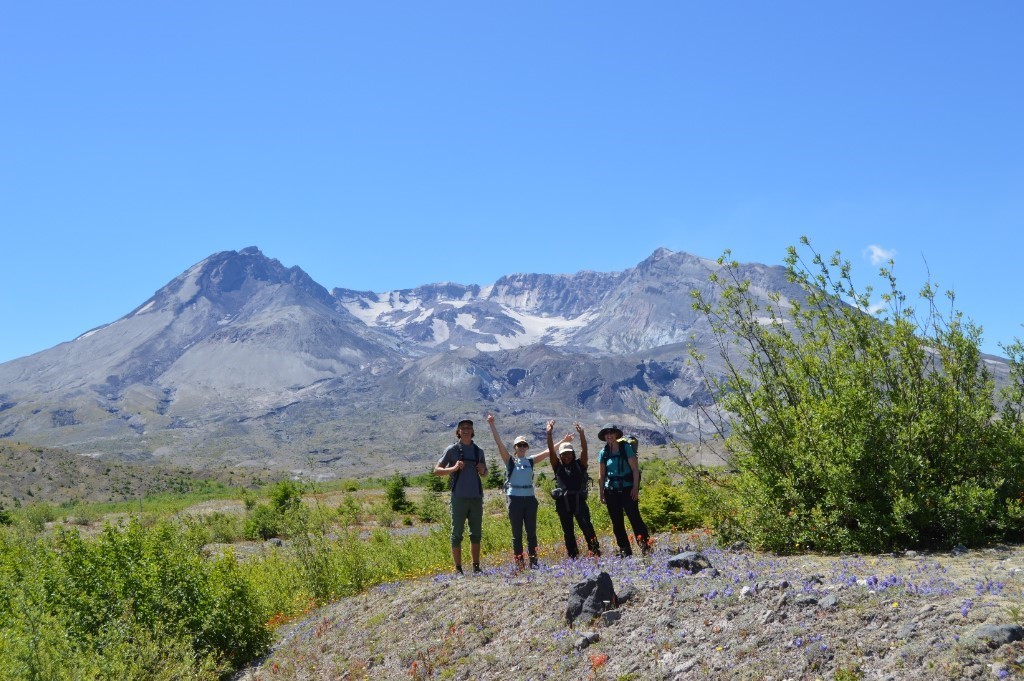
Collaborator, Dr. Deb Finn (@streambug), Assistant Professor at Missouri State University, has provided many assets to our research program, far more than strictly field work. Connections like these provide Evergreen students with unique networking opportunities.

Working with Dr. Finn on the Pumice Plain means we had the opportunity to study the hyporheic zones of new streams at Mount St Helens! Undergraduates learned how to install and monitor hyporheic wells along the streams.

Assessing hyporheic zones generated a lot of data for our team to better understand the novel watersheds at MSH. It turns out that 40 years isn’t long enough for most hyporheic zones to develop but we gained insight into up and downwelling and the potential for hyporheic habitat development!
